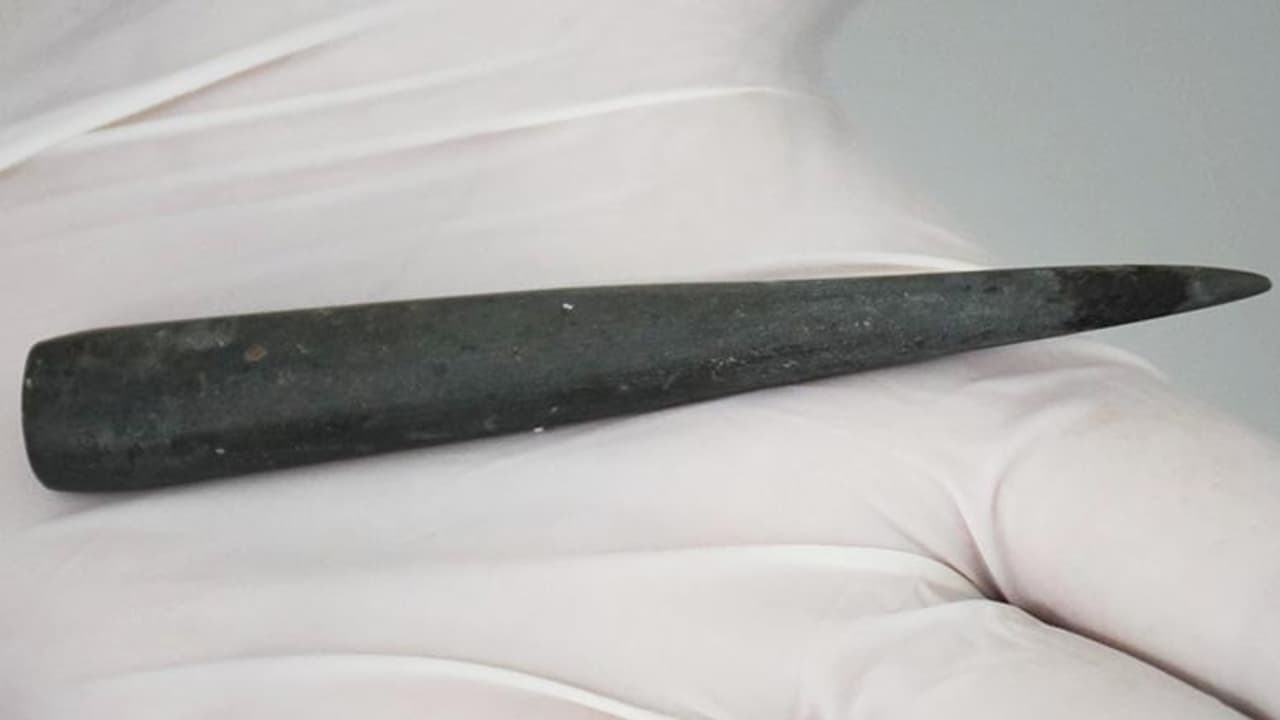Archaeologists have uncovered the world’s oldest eyeliner, a kohl stick dating back more than 8,200 years, revealing that the use of makeup stretches back millennia.
An extraordinary discovery in the ancient ruins of Yeşilova Höyük, a prehistoric city in western Turkey, has provided remarkable insight into the beauty rituals of early humans. Archaeologists have uncovered the world’s oldest eyeliner, a kohl stick dating back more than 8,200 years, revealing that the use of makeup stretches back millennia, the DailyMail reported.

This ancient kohl stick, crafted from green serpentine stone, still bears traces of black paint on its tip—preserving evidence of its last use. The find, which resembles modern-day eyeliner, showcases an enduring tradition of makeup worn by people across various regions and eras.
Lead archaeologist Zafer Derin expressed the significance of the discovery, stating: “For centuries, kohl has been worn by individuals of all genders, statuses, and socioeconomic levels.”
Kohl, known for its distinctive dark pigment, has been widely used in regions like Egypt, the Levant, Syria, Iran, and Anatolia for both cosmetic and medicinal purposes. “It's been used from ancient times to the present, and it is still used in many regions today,” added Derin. The Yeşilova Höyük find is the oldest kohl stick known to date, offering a rare glimpse into the personal adornments of the region’s earliest inhabitants.
The artefact was discovered in a Neolithic layer dating back to around 6,200 BC, providing further insight into life in the ancient Aegean city. Yeşilova Höyük, located in what is now Izmir, Turkey, was a bustling hub of human activity for over two millennia, with continuous occupation between 6500 BC and 4000 BC. Excavations have revealed reed huts, cooking fires, stone houses, workshops, and courtyards, showcasing the area's evolving settlements.
However, the Neolithic site met a tragic end in 5700 BC, when it was abandoned and destroyed by a devastating fire, leaving it buried under layers of silt for thousands of years.
The 10-centimeter kohl stick, with its meticulously smoothed and sharpened tip, was a prime example of the technological innovations developed by the people of Yeşilova Höyük during this era. Dr. Derin described it as "very well smoothed and shaped into a sharp pen," explaining that it would have been dipped into a container of kohl and applied like a modern eyeliner.
The black pigment found on the tip of the stick has been sent for further analysis, though it is believed to be manganese oxide, a key ingredient in ancient kohl.
While often associated with beauty, kohl also had practical applications in ancient cultures. “As it is known from many written texts, paintings, and sculptures in ancient Egypt, kohl was mainly used for the treatment of eye diseases rather than an aesthetic function," Dr. Derin explained. "It was also thought to reduce the brightness of the sun by applying it thickly around the eyes."
Made by grinding the mineral stibnite, kohl has left its mark on history, with its name—‘al-kuhl’ in Arabic—also being the root of the English word ‘alcohol.’
This discovery not only shines a light on the beauty routines of early humans but also on the interconnectedness of cosmetic and medicinal practices throughout history.
